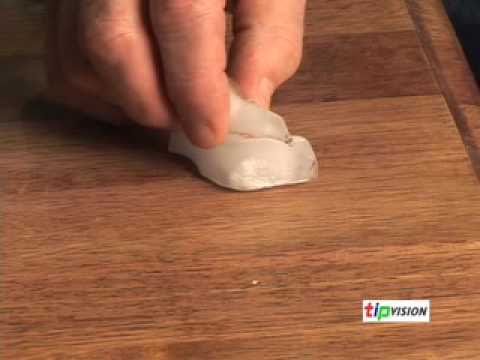Contents
In Home Furniture Repair – How to Fix Furniture Fast
Expert tricks for instant restoration
Some furniture requires professional attention (or a trip to the landfill). But furniture that shows the scars of normal use can usually be restored to excellent condition. In fact, there are people who make a good living doing just that.
Here are some of their tricks:
Before anything, clean it up
Furniture restoration expert Kevin Southwick starts every project with a thorough cleaning. His secret formula is plain old soap and water, even on priceless antiques. Kevin adds a few drops of Ivory dish soap to water and gently scrubs with a damp sponge. On crevices and carvings, he uses a paintbrush. After cleaning, he wipes the surface with a sponge dampened in water only. Finally, he dries the piece with a clean towel and admires his work. Sometimes, a good cleaning is all a dull, old piece of furniture really needs.
Erase white rings
There are special products formulated for hazy, white blemishes (search online for “ring remover”). But try this first: Slather petroleum jelly on the ring and let it sit overnight. Often, the oil in the jelly will penetrate the finish and render the ring invisible.
Restore the shine in minutes
A coat or two of wipe-on polyurethane is the easiest way to revive a dull finish. Just clean the old finish thoroughly and wipe on the poly with a lint-free cloth. That’s it. It comes in gloss, semigloss and satin versions; satin is the best choice for hiding fine scratches. Years down the road, you can recoat it again if the luster fades. But be sure to test in an inconspicuous spot first: Wipe-on poly doesn’t stick well to some finishes and might flake off.
What about wax?
Finishing wax can restore the shine to a dull finish. It’s easy to use and almost goof-proof: Wrap a lint-free rag around a ball of wax, rub it on, wait a few minutes and wipe off the excess. Unlike wipe-on poly, it’s available in several colors so you can change the tone of the wood. But wax isn’t nearly as tough or long-lasting as wipe-on poly.
Better scratch removers
Home centers carry touch-up pens for scratched finishes. But stop by an art supply store instead. You’ll find permanent markers in a huge range of wood-tone colors, some of them with fine tips—perfect for skinny scratches.
Spray paint upholstery
Yes, you can. Most auto parts stores and some home centers carry paint formulated just for fabric (for a huge range of colors, search online). Fabric paint has some drawbacks, though: Fuzzy fabrics like velour might feel like sandpaper when you’re done, and light paint colors may not hide patterns in the fabric. So test on the back of a chair or the underside of a seat cushion first.
Make dents disappear
Moisture makes wood swell and—sometimes—heals dents. First, cut tiny slits in the finish parallel to the wood grain so that water can penetrate. Then drip a little water on the dent and wait until it dries. You can repeat this process a couple times, but after that you risk damaging the finish.
Make sticking drawers glide
Candle wax is a magical lubricant for old drawers or any furniture that has wood sliding against wood. Just rub a candle hard against the runners under drawers. Rub the tracks inside the chest, too.
